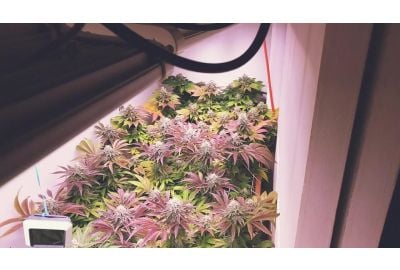Growing Weed in a Closet: The Ultimate Guide for Home Growers
Are you thinking of growing weed in your closet? The great news is it’s an easy, effective solution for those without a dedicated grow room or garden. It’s affordable, simple to set up, and requires less effort and equipment. Home cultivation has never been easier.
Cannabis is a versatile plant that can grow almost anywhere. A closet is a small space, so it’s better suited for small strains that don’t require lots of room to stretch.
Join me as I guide you through everything you need to know about growing secretly in closets. I provide specific space-saving techniques and strategies to create a thriving cannabis garden.
Ready to maximize your closet space? Let’s grow.
Growing weed in a closet: A good or bad idea?
Choosing an area to grow weed in is a big decision. It entails careful planning and investments in equipment, lighting, and growing mediums. Some growers can personalize a cultivation room or sow seeds in their garden, but others might have limited options.
A closet grow setup is a form of micro growing. It’s a good idea for beginners who want to start small and learn cultivation gradually. It’s also excellent for growers who need to use stealthy methods to avoid thieves, pets, or nosy neighbors.
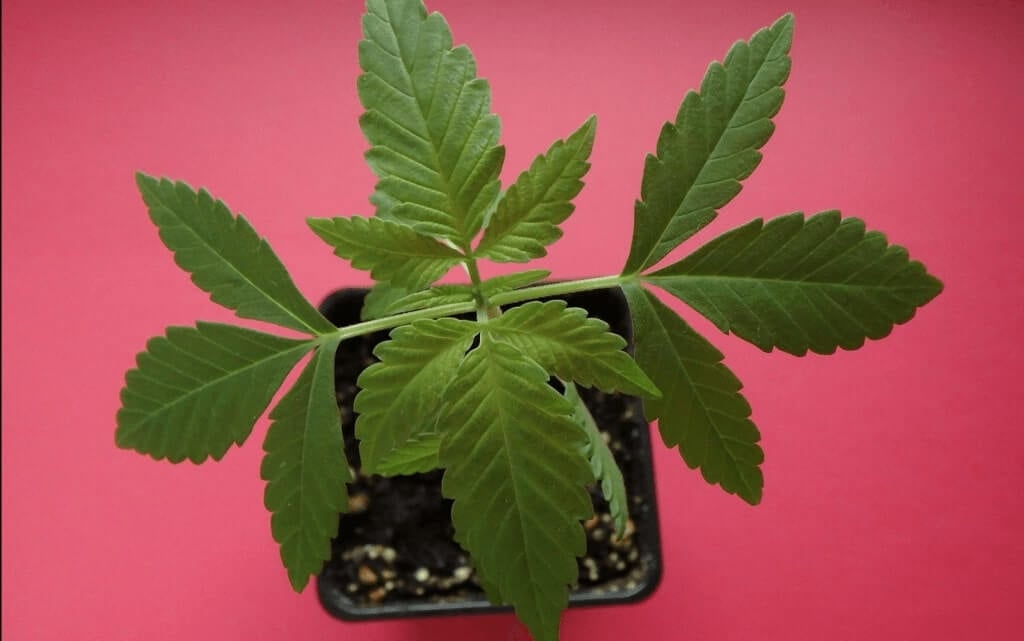
Consider what your goals are. Using a closet for cannabis growing presents the following advantages:
- It allows you to grow a private, discreet crop.
- It gives you more control over the environmental conditions and plant growth.
- It’s ideal if you don’t have space for a grow room or a separate balcony to cultivate weed plants.
- It provides a more affordable starting option, saving money on expensive equipment.
- It’s easy to monitor your plants and take care of them.
Building and using a weed growing closet only has a few disadvantages:
- It’s not ideal if you want a big harvest with high yields.
- You must ensure you don’t have a bright room or light leaks that could negatively affect the growth cycles.
- The smell of weed is strong and may seep into your room unless you use strong odor control.
Choosing a closet for your cannabis plant is ideal for most people. It’s suitable if it’s big enough for at least one plant. The space and room need to be light proof to block out extra illumination. Alternatively, you can use a cabinet or wardrobe or buy a grow tent setup.
Things to consider when growing cannabis in a closet
You need to consider several factors when picking an ideal area for growing weed. A closet lacking space, light, and airflow can be detrimental to weed plants.
It isn’t a typical area to cultivate weed in, but it’s effective if you set it up correctly. There are several attributes your growing closet needs, including lighting, correct temperatures, and reflective walls.
Let’s explore them.
How big is your closet?
Cannabis plants come in many shapes and sizes. They need room to stretch and flourish without external influences affecting their development. You need to ensure your closet is big enough to accommodate at least small-sized strains.
Standard house ceilings, including closets, usually have 8-foot ceilings. You have a wide variety of available space if you’re interested in closet grows. The more space the better, but growing in any available space is easy if your closet is less than three feet wide.
Grow tents come in much smaller sizes than the average closet space. One that measures 2’ x 2’ x 4’ (feet) is ideal for small to medium-sized cannabis plants.

Grow light is king
Lighting is one of the most crucial components of successful cannabis cultivation. Grow lights are essential for photosynthesis and healthy plant development. You must mimic natural sunlight for plants as closely as possible because you’re not providing it outdoors.
Your crop needs a lot of light throughout cultivation, particularly during vegetation. I highly recommend you follow a proper lighting schedule based on the strain you’re growing. Photoperiods require a change from 18 hours to 12 hours to induce flowering.
A weed closet grow is a small space, so you don’t need a complex lighting setup. Keep it simple: choose grow lights that give off less heat, like LED’s. These globes promote and maintain a healthy environment for your plant. They also help avoid heat stress.
There are three primary grow light types: LED (light-emitting diode), HID (high-intensity discharge), and CFL (compact fluorescent light). Each one offers unique advantages and disadvantages, but it’s also important to consider the small space we’re using.
I recommend LED lamps, which are energy and cost-efficient, easy to set up, and don’t produce excessive heat. They also provide the correct UV-B spectrum and ideal light intensity for weed plants.
Purchasing smart LED lamps is ideal for closets; they let you adjust the intensity, temperature, and light spectrum. Follow an indoor weed growing guide to ensure you provide the correct factors at each growth stage.
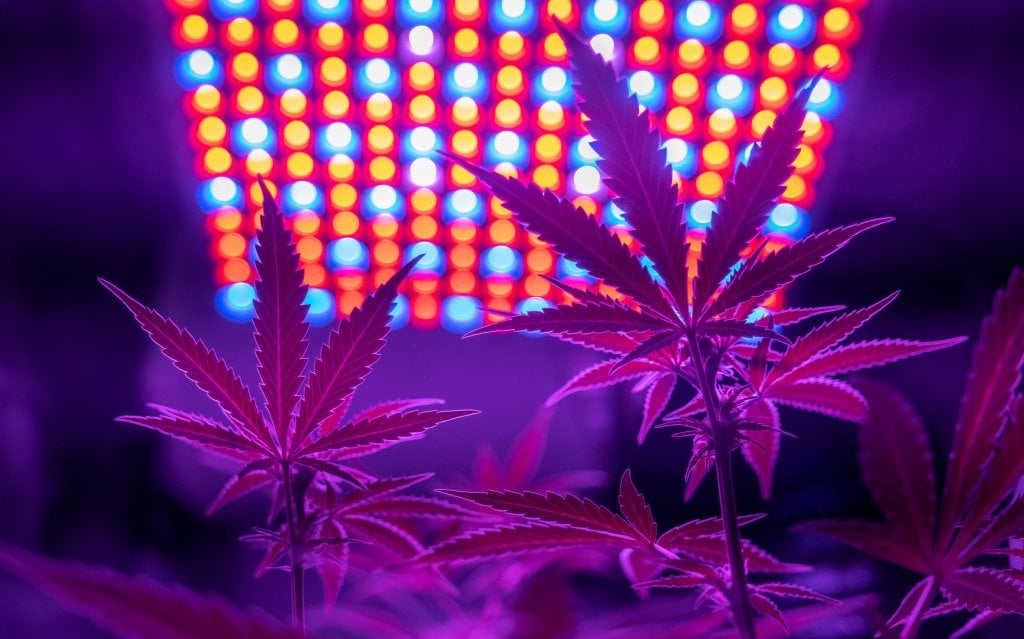
Inner coverage of your closet
The inside of your closet should be a metallic grey or a flat white color to help reflect the lighting sufficiently. Be wary of using the wrong type of reflective material that increases brightness too much and damages your plants.
Mylar or panda film (black and white plastic) are excellent choices for covering the inner walls of your closet grow room. They’re highly reflective and maximize light exposure for your crop. Ensure the white side faces the plants, and use metallic ventilation tape to stick them up.
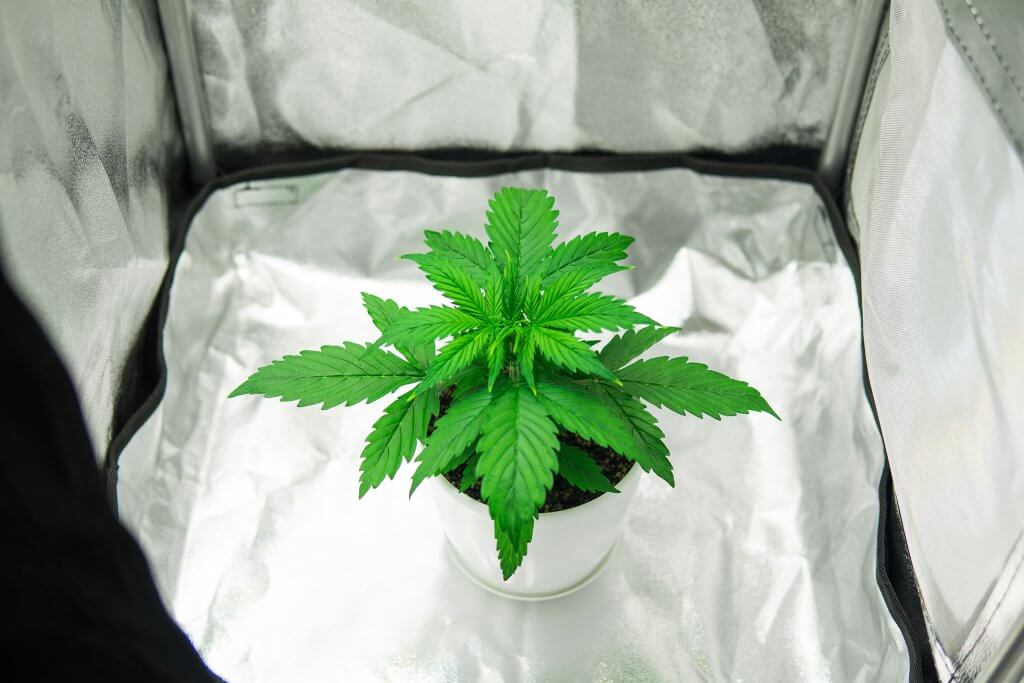
Constant airflow is crucial
Proper ventilation is vital for cannabis plants to flourish. It helps protect against diseases and pests, ensures adequate temperature and humidity regulation, and promotes healthy growth.
Airflow may be more challenging to control in a small closet space. To avoid stagnant air, you must ensure fresh, cool air enters the area while the old, hot breeze goes out.
Open the windows frequently to aid in ventilation. Keep them closed if adverse weather occurs, like rain or snow. Ensure your plants are out of view to avoid onlookers spotting them through the window.
Learning how to grow weed in a closet with proper airflow may involve trial and error. Everyone’s closet space is different, so monitor the ventilation consistently to ensure it’s working properly.
I recommend installing large intake fans to bring fresh air into the room. Use an exhaust fan to send hot air outside.Consider placing a small desk fan on a windowsill in your room to aid in pushing more stagnant air outside.
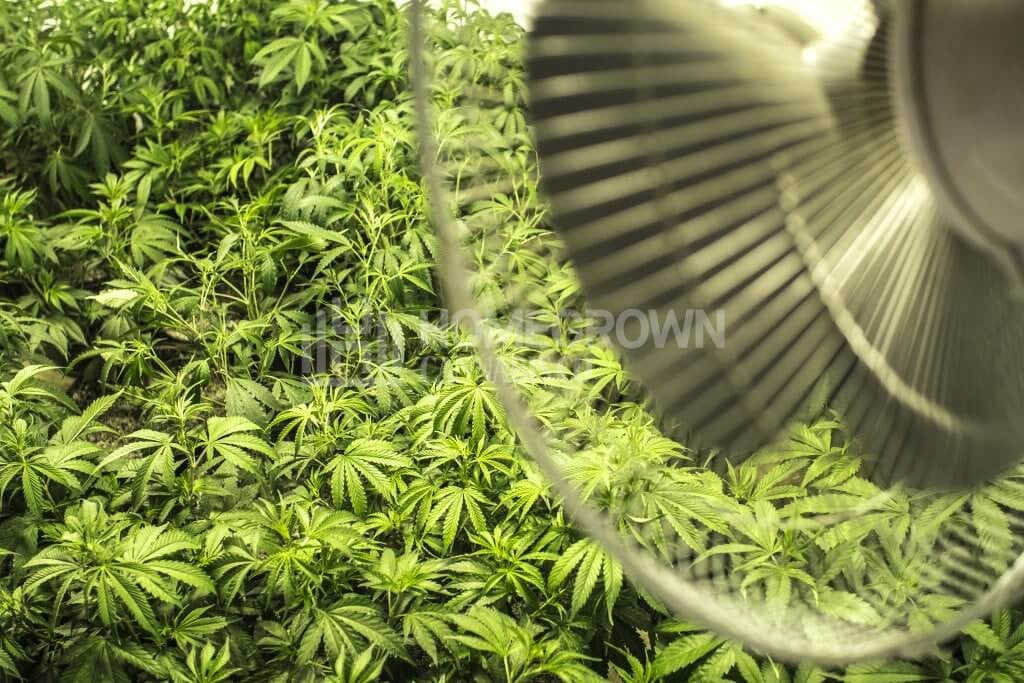
Odor control with carbon filters
Activated carbon (charcoal) filters are essential for minimizing the odor from smelly weed. They also help improve air quality and prevent pests and mold.
Attach one to your exhaust point to ensure it receives and filters the odorous air properly.
Use small cannabis strains to grow in a closet
Growing weed in a cabinet, closet, or cupboard usually means limited space. Choosing the correct strain is vital for producing optimal growth and yields.
I recommend using autoflowers, which are usually short and compact, reaching 1–3 feet on average. If you want to grow a sativa strain, be prepared to use extra pruning and training techniques to manage the plants’ height.
Research the strain’s height before buying it. Choose the size of the pot based on how much available space you have. Large ones may encourage bigger growth in your plants.
Choose an ideal pot size for autoflower, feminized, regular, or fast version strains depending on its predicted height. Ensure your closet has enough space to accommodate the pot and the plant.
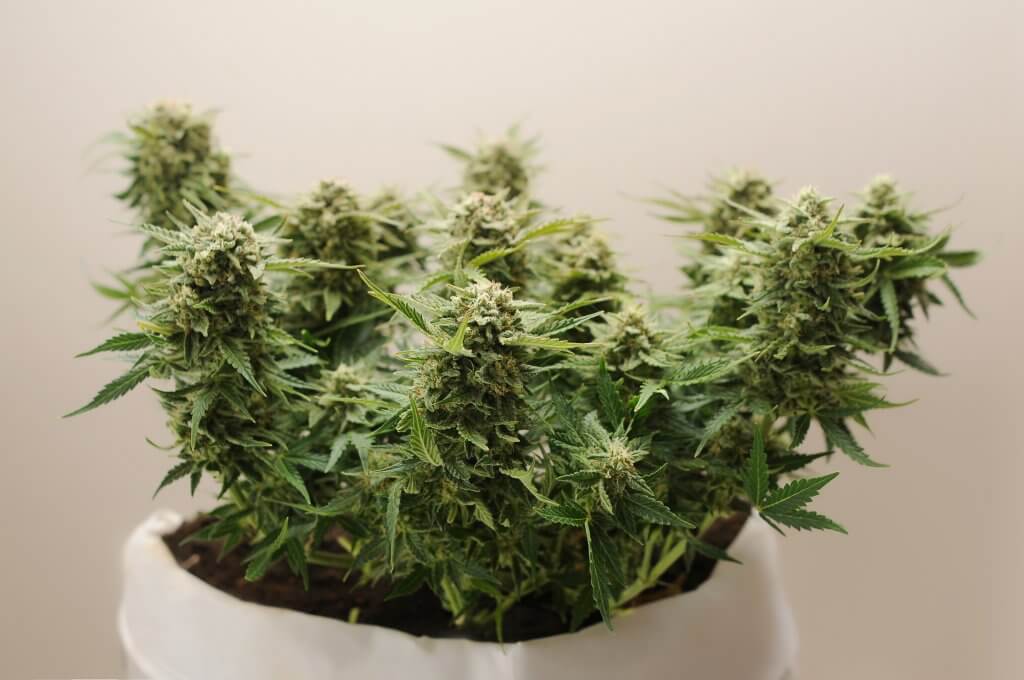
Control plant height and flowering stretching
Regardless of which strain type you choose, managing the height of cannabis plants is vital. I highly recommend using pruning and training methods to help curb their growth. These techniques can also boost yields and aid in healthier development.
Initiating the flowering stage earlier can force the plants to stay shorter and flatter, promoting a more even canopy.
I don’t recommend excess pruning or high-stress training if you use autoflowers for closet growing. They flower fast and have little time to recover from stress or errors.
Use the Screen of Green (ScrOG) training technique to help manage vertical height. Top your plant regularly during vegetation. Reduce the stretching during flowering by keeping the same daytime and nighttime temperatures.
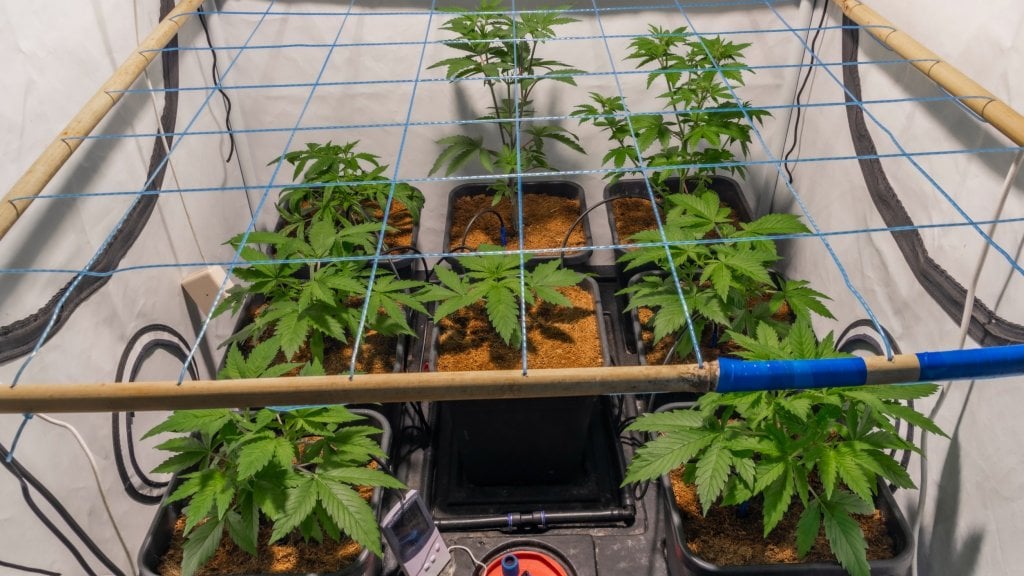
Water and runoff
Water is a necessary component of cannabis growth. Providing moisture to your plants in a small space shouldn’t be challenging as long as you have enough room to move around.
Choose an ideal growing medium with sufficient drainage to eliminate excess water. I recommend a mini hydroponics setup, as it manually takes away the stress of topping up your plants with moisture.
Investing in one of the best grow tents is also ideal to grow weed in a closet. They usually have all the necessary components for optimal lighting, drainage, and airflow.
Coco coir, clay pebbles, rockwool, and perlite are excellent options for hydroponic growing mediums in your closet.
Ensure your growing media has enough aeration and a container at the bottom to collect water runoff.
How to grow weed in a closet: Build a full-scale closet grow in 8 steps
Now you know what goes into creating an ideal environment for your plants. It’s time to become a master cultivator by learning how to grow weed in your closet.
It’s a straightforward process that only entails a few simple components to set up.
What you need
Gather the following equipment and materials before you start:
- Cleaning supplies
- A standard strength bleach solution which you can dilute to make a cleaning solution
- White paint, mylar film, or panda plastic
- Duct tape
- Grow lights
- Thermometer and hygrometer (or combined thermo-hygrometer)
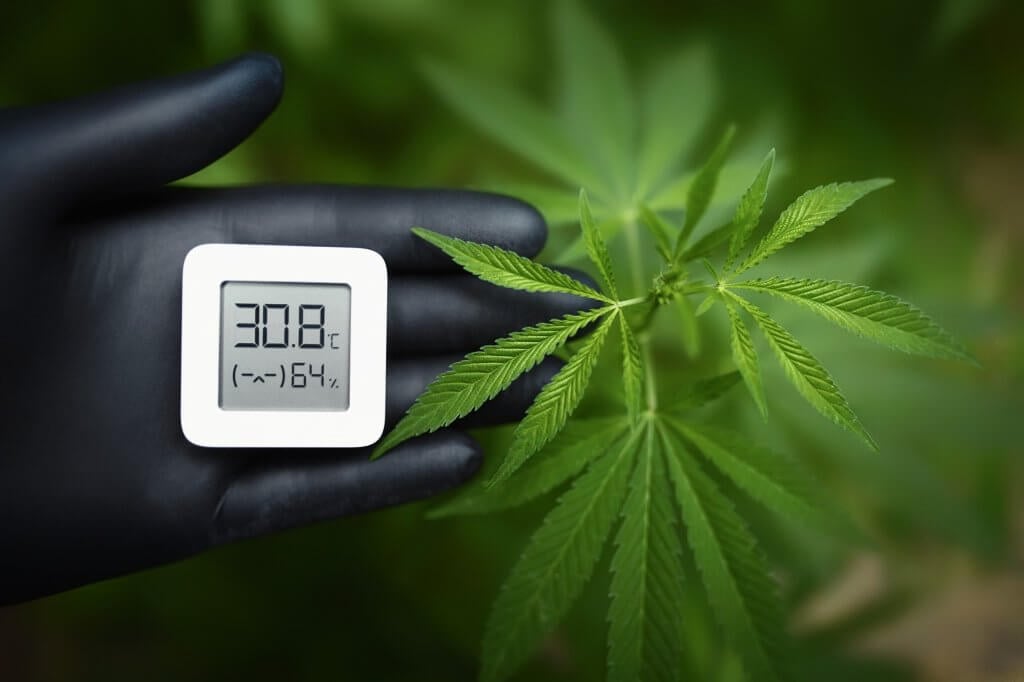
- Intake and exhaust fans
- PC or mini oscillating fans
- Extension cord
- Carbon filter
- Soil or soilless growing medium (a pot of soil or a hydroponics system)
Optional tools you may need if you want to create extra ventilation:
- Ducting for ventilation
- Drill
Closet grow setup: Step-by-step guide
Now for the fun part. Follow the steps below to create an efficient space for your cannabis plants. You’ll soon become a master closet grower.
- Clear everything from your closet, so it becomes an empty space.
- Clean the entire area thoroughly, from top to bottom. Use cleaning supplies and a diluted bleach solution to eliminate any dirt, dust, and mold that could affect your plants negatively. Scrub every surface, then leave it to dry for a few hours.
- Paint the walls of your closet white if you’re allowed to. Alternatively, cover them with mylar film or panda plastic.
- Place your growing medium inside. I recommend using a fabric pot. They’re excellent at promoting healthy airflow for the roots and draining excess water adequately. Choose one that fits into your closet.
1–3 gallon pots work well for very small closets. Larger pots can promote bigger plant growth. You may also use a small-scale hydroponic system.
- Set up your ventilation system. You need an intake and exhaust to ensure constant airflow in your closet grow area. An inline fan is ideal if you’re using ducting and carbon filters for ventilation.
- Hang your lighting fixtures high enough above the plant canopy so they don’t burn your crop.
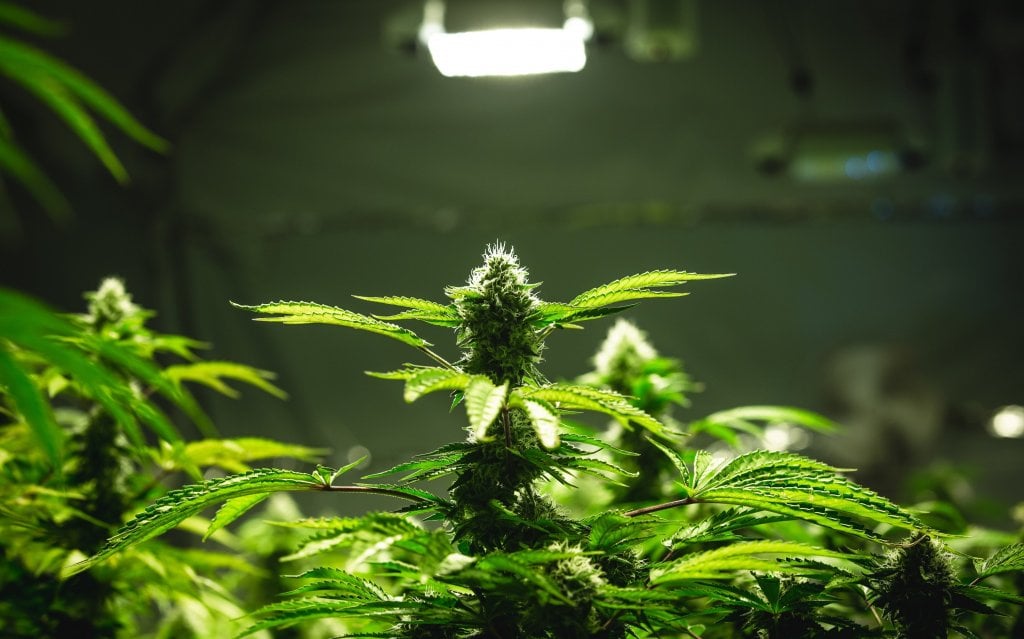
- Germinate your cannabis seeds in a separate area, using the paper towel technique, in a dark, dry place. Purchase autoflower seeds for smaller strains that’ll fit into your closet.
- Once the seeds sprout, transplant them into your growing medium.
Follow the correct lighting and nutrient schedules for each growth stage. Keep your plants in darkness for 12 hours and provide 12 hours of light during the flowering stage.
Address potential problems as soon as they arise. A closet isn’t the best place to grow cannabis, but it can still produce fantastic results. Set up the space correctly, and you should get a successful crop.
Controlling the climate in a closet grow
Due diligence is vital when you grow weed at home. Check your plants daily and use a thermo-hygrometer to ensure ideal environmental conditions.
I recommend the following temperature and relative humidity (RH) for each growth stage:
- Seedling: 68–77°F and 65–70% RH
- Vegetation: 71–82°F and 40–70% RH (slightly lower the humidity weekly)
- Flowering: 68–78°F and 40–50% RH
- Late flowering: 64–75°F and 30–40% RH
Humidifiers and dehumidifiers are excellent for controlling the humidity and airflow in your closet. Use air conditioners and dehumidifiers and keep the door closed if the outside environment is very humid and hot.
A fan or air conditioner can help lower temperatures if your closet gets too hot.
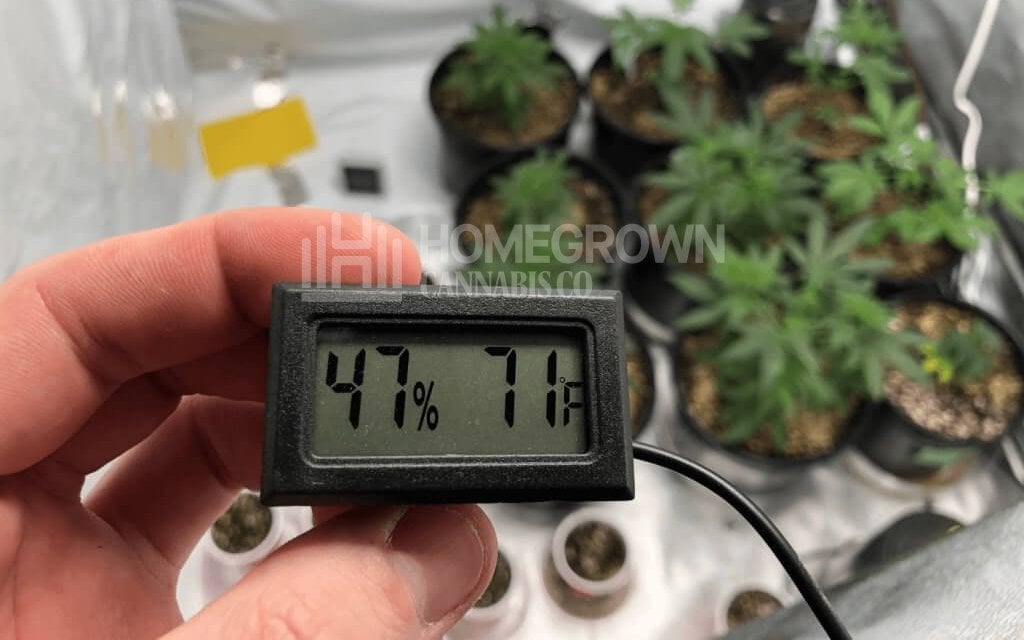
No grow room? A closet grow setup is a worthy alternative
Growing weed in a closet is a fun experiment that proves the versatile plant can flourish anywhere. Setting it up is straightforward, and your focus should be on maintaining the ideal conditions for your crop.
Ensure the space has constant airflow and enough room for your plants to stretch. Low-stress training techniques and light pruning during vegetation helps you manage their height.
Only use small-growing, short strains like autoflowers that won’t get too tall. At Homegrown Cannabis Co., we stock a massive collection of premium cannabis seeds. Visit our store to find the ideal plant for your closet and start your home grow today.
